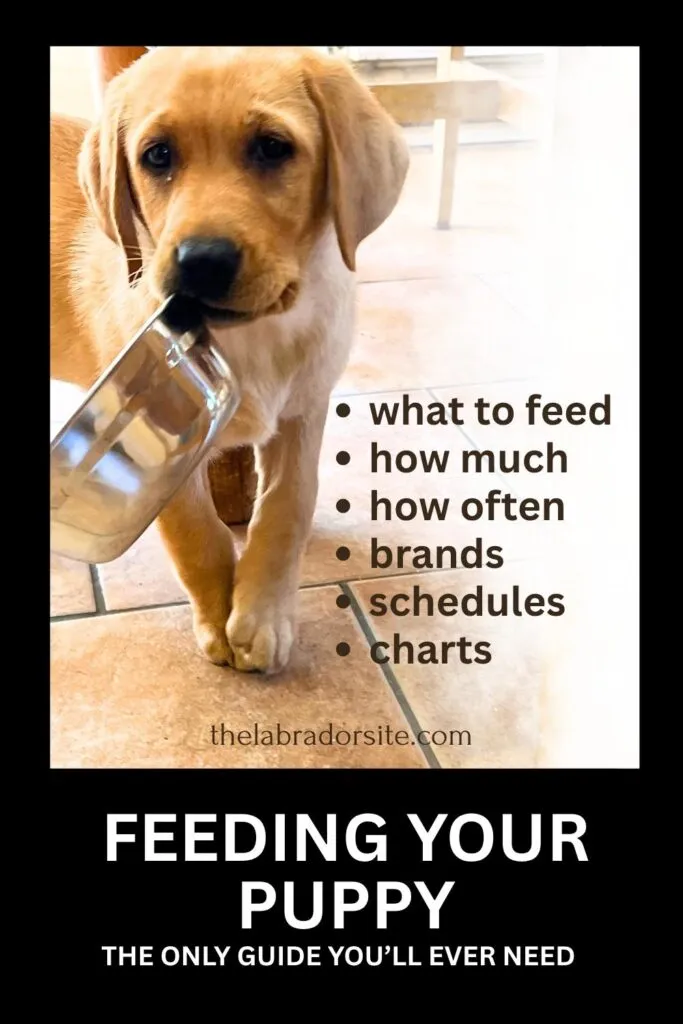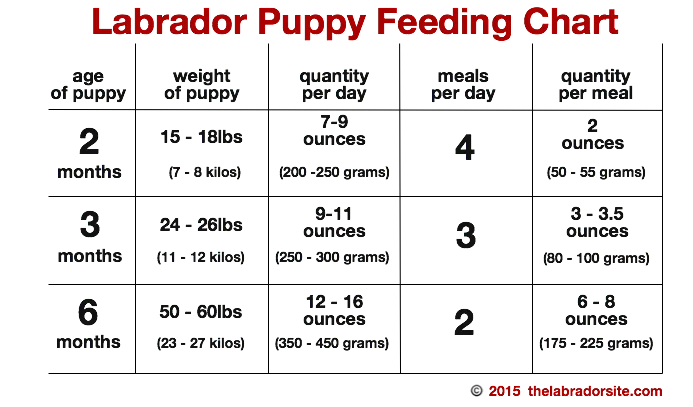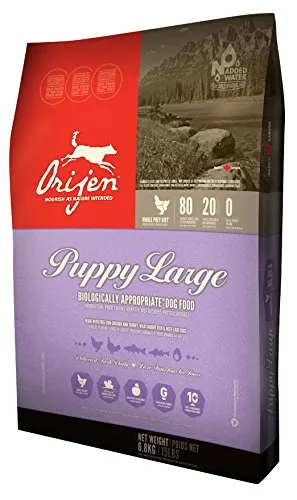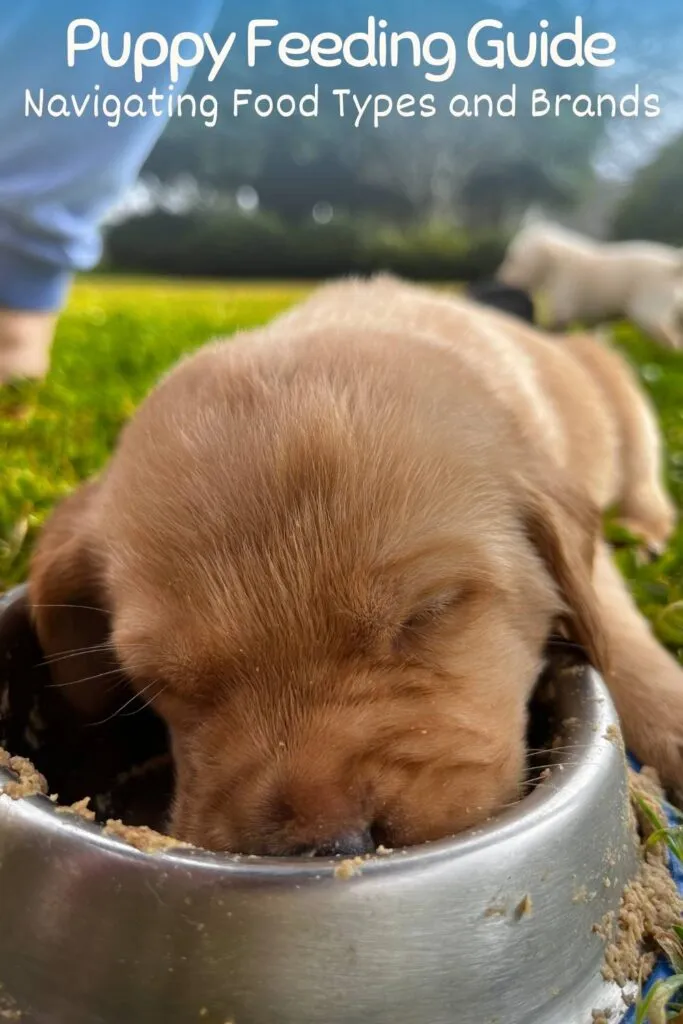Welcoming a new Labrador puppy into your home is an exciting time, but it comes with the big responsibility of ensuring they receive the best nutrition for healthy growth. Deciding What To Give A Labrador Puppy To Eat can feel overwhelming, with a bewildering array of food types, brands, and advice available. As experts in dog care and Labrador specialists, we’re here to guide you through the maze, providing clear schedules and practical tips to help your furry companion thrive. Proper feeding during these crucial early months sets the foundation for a long, healthy life. From selecting the right food type to understanding portion control and establishing a consistent feeding schedule, every detail matters for your growing pup.
 Yellow Labrador puppy carrying its bowl, symbolizing proper nutrition guidance for what to give a Labrador puppy to eat.
Yellow Labrador puppy carrying its bowl, symbolizing proper nutrition guidance for what to give a Labrador puppy to eat.
Many puppy parents frequently ask about the best brands, or if it’s safe to incorporate ingredients like eggs, rice, or milk into their puppy’s diet, and whether raw feeding is a viable option. While past generations might have fed puppies a mix of household scraps, raw meat, or various cereals, modern dog care has evolved, offering more specialized and convenient options. Today, the majority of Labrador puppies are fed commercial puppy kibble, readily available in pet stores. However, kibble isn’t the only choice, and understanding the alternatives is key to making an informed decision for your new family member.
Understanding Your Labrador Puppy’s Unique Nutritional Needs
Labrador puppies grow rapidly, particularly in their first few months, which means their nutritional requirements are significantly different from those of adult dogs. During this period of intense development, they need a higher concentration of calories, protein, and specific vitamins and minerals to support bone, muscle, and organ growth. A balanced diet is crucial to prevent both deficiencies and excesses, which can lead to serious health issues.
For instance, an imbalance in calcium and phosphorus can negatively impact bone development, while insufficient protein can hinder muscle growth. Therefore, choosing a food specifically formulated for puppies, and ideally for large breeds like Labradors, is paramount. These specialized formulas are designed to provide the right balance of nutrients tailored to their fast-paced development, supporting everything from a robust immune system to healthy skin and a shiny coat.
Main Types of Puppy Food for Labradors
When considering what to give a Labrador puppy to eat, you’ll find several primary categories of food available, each with its own benefits and considerations.
Commercial Dry Kibble: The Popular Choice
Commercial dry kibble remains the most popular choice for puppy parents, and for good reason. Reputable manufacturers formulate kibble to be a complete and balanced diet, providing all the necessary nutrients your Labrador puppy needs for healthy growth.
- Benefits: Kibble is convenient to store, has a long shelf life when kept properly (in an airtight, food-grade container), and is generally cost-effective. It also aids in dental health by helping to scrape plaque off teeth. Most breeders start their puppies on kibble, and veterinarians often recommend this method of feeding due to its proven nutritional completeness and safety.
- What to look for: When choosing kibble, prioritize brands specifically designed for large breed puppies. These formulations often contain appropriate protein levels, controlled calcium-to-phosphorus ratios, and L-carnitine to support healthy joint and bone development, which is critical for breeds prone to hip and elbow dysplasia like Labradors. Look for high-quality protein sources (like chicken, lamb, or fish) as the first ingredients, and avoid excessive fillers or artificial additives.
Wet Food (Cans or Pouches)
Wet food, typically found in cans or pouches, can be a palatable option for some puppies. While less common as a sole diet for growing Labs, it’s often used to enhance kibble or entice picky eaters.
- Usage: Some owners mix wet food with kibble to add moisture and flavor, making meals more appealing. It can also be useful for puppies recovering from illness or those needing extra hydration. However, ensure that any wet food you add still contributes to a balanced diet and doesn’t upset the puppy’s stomach.
Raw (BARF) Diet
The Biologically Appropriate Raw Food (BARF) diet involves feeding uncooked meat, bones, fruits, and vegetables. There’s a small but growing community of raw feeders who believe it offers significant health benefits.
- Benefits and Drawbacks: Proponents suggest improved coat health, better digestion, and increased energy. However, feeding a raw diet comes with considerable responsibilities and potential risks.
- Importance of Research: If you opt for a raw diet, extensive research into puppy nutrition is essential to ensure your Labrador puppy receives a balanced diet during their rapid growth phase. An unbalanced raw diet can lead to severe nutritional deficiencies or excesses, particularly concerning calcium and phosphorus, which are vital for bone development. Consulting with a veterinary nutritionist experienced in raw feeding is highly recommended.
- Safety: Raw food can also pose bacterial risks (e.g., Salmonella) to both pets and humans, requiring strict hygiene practices in handling and preparation.
Home-Cooked Puppy Food
A very small number of owners prepare home-cooked meals for their puppies. This method requires a deep understanding of canine nutrition to ensure the diet is complete and balanced. Without expert guidance from a veterinary nutritionist, it’s challenging to meet all of a growing Labrador puppy’s complex dietary needs and is generally not recommended for novice owners.
Expert Opinions: Divergent Views on Puppy Feeding
It’s important to acknowledge that experts often hold differing opinions on the “best” way to feed your puppy. Dog breeders, veterinarians, and even nutritionists may have strong views, often citing dire consequences for not following their specific advice, which can understandably cause worry among new puppy owners.
The reality is, there’s no conclusive, high-quality scientific evidence definitively proving that one feeding method (e.g., kibble vs. raw) is inherently superior for the long-term health of all dogs. Both approaches have their own set of risks and benefits. The most crucial factor is ensuring your Labrador puppy receives high-quality, nutritionally complete food tailored to their age and breed size.
If, like most people, you choose to feed your Labrador puppy commercial dry puppy food, rest assured that you are providing a perfectly adequate and often veterinarian-supported diet. High-quality kibble is designed to meet all your puppy’s nutritional needs and supports healthy development.
How Much to Feed Your Labrador Puppy: Portion Control is Key
A common question we hear is, “how much should I feed my Labrador puppy?” While puppy weight is a factor, relying solely on it can be misleading. Your puppy’s physical shape is a more reliable indicator of whether they are receiving the right amount of food.
Risks of Overfeeding Your Puppy
Labradors are predisposed to rapid growth, and overfeeding can exacerbate this. Rapid growth doesn’t just lead to excess weight; it can result in larger but less dense bones and associated skeletal abnormalities, such as hip and elbow dysplasia, to which Labradors are already prone. This makes careful portion control especially critical for the breed.
The following chart provides a general guideline for kibble-fed puppies. Remember, this is a very rough estimate; the exact quantity will vary depending on your individual puppy’s metabolism, activity level, and the specific brand of food you are using.
 Detailed Labrador puppy feeding chart outlining recommended daily food quantities to ensure healthy growth.
Detailed Labrador puppy feeding chart outlining recommended daily food quantities to ensure healthy growth.
This Labrador puppy feeding chart is a starting point. Always consult the feeding guidelines on your specific food package, and adjust based on your puppy’s body condition.
Choosing the Best Brand of Puppy Food for Your Labrador
Selecting the best brand of food is paramount for your Labrador puppy’s health. The ideal food will provide all necessary nutrients without breaking the bank.
It’s crucial to choose a food specifically designed for puppies, as their nutritional needs differ vastly from adult dogs. For Labradors, look for formulas aimed at medium to large breed puppies. Carefully check the packaging for dietary charts and ingredient lists. Ideally, you want food with an optimal protein content, moderate fat, and the lowest possible amount of additives.
The Cost of Puppy Food
While it might seem counterintuitive, the healthiest puppy food, though often more expensive per bag, can be more economical in the long run. Premium brands are usually more concentrated, packed with higher proportions of proteins, essential oils, and other vital nutrients. Cheaper brands often contain more “fillers,” typically extra carbohydrates from grains. The absence of these fillers in higher-quality foods means you often feed smaller quantities, making the daily cost comparable or even lower.
Additionally, cheaper brands with more fillers can lead to your puppy producing more waste, as their digestive system processes less of the actual nutrition. While some premium brands may be out of budget for some families, investing in a high-quality brand generally pays off in better health and fewer vet visits.
High-Quality Brands of Puppy Food
Certain puppy food brands have built a strong reputation for producing high-quality products, earning the loyalty of breeders who have fed them to generations of puppies.
One highly recommended option is Orijen Large Breed Puppy Formula(paid link). This brand, along with other premium options, often utilizes legumes like lentils and chickpeas as a source of carbohydrates, which are generally gentler on a dog’s stomach compared to grains that can sometimes cause bowel irritation.
 Orijen large breed puppy formula kibble, a premium option for what to give a Labrador puppy to eat for balanced nutrition.
Orijen large breed puppy formula kibble, a premium option for what to give a Labrador puppy to eat for balanced nutrition.
Puppy Food Availability
Major, reputable brands are widely available and have a strong reputation to uphold. Choosing one of these typically ensures your puppy is eating a good quality product. Always refer to the manufacturer’s quantity guidelines on the packet for their specific brand.
Again, these guidelines are merely a rough guide. An overfed puppy is prone to diarrhea, obesity, and dangerously rapid growth, all of which should be avoided.
Following Puppy Feeding Quantity Guidelines
It’s common for puppies of the same age to vary significantly in weight and size. Therefore, don’t be alarmed if your puppy doesn’t precisely match the weights on a general feeding chart. Use the guidelines on the food packet as a starting point, then observe your puppy’s body condition. Feel their ribs (you should be able to feel them easily but not see them) and note their energy levels. If you have any concerns, always consult your veterinarian.
 Adorable yellow Labrador puppy happily eating from its food bowl, illustrating healthy feeding habits for young Labs.
Adorable yellow Labrador puppy happily eating from its food bowl, illustrating healthy feeding habits for young Labs.
Keeping Your Puppy at the Right Weight
Maintaining your Labrador puppy at a healthy weight is crucial. While we all adore cuddly Labrador puppies, they shouldn’t be rotund. They should develop a definite waist by around three months of age, similar to adult dogs. Regularly assessing your puppy’s body condition will help you adjust their rations accordingly as they grow.
Conversely, some puppies might appear too thin. If you’re worried about your puppy’s growth rate, a vet check-up is advisable. Sometimes, it’s as simple as increasing food amounts or switching to a more nutritious brand with fewer fillers.
When and How Often to Feed Your Labrador Puppy
Just like most baby animals, your Labrador puppy needs to eat more frequently than adult dogs. This period of rapid growth demands a steady supply of calories and nutrients. Feeding their entire day’s ration in one go can overwhelm their digestive system, leading to diarrhea and poor nutrient absorption. Therefore, it’s essential to break up their daily food intake into several small meals, spaced three to four hours apart. This approach also helps prevent tummy upsets.
 Black Labrador puppy eating from a bowl, juxtaposed with a yellow Lab puppy playing, emphasizing the link between proper feeding schedule and puppy energy.
Black Labrador puppy eating from a bowl, juxtaposed with a yellow Lab puppy playing, emphasizing the link between proper feeding schedule and puppy energy.
General Guidelines:
As a rule of thumb for kibble-fed puppies:
- From eight weeks to three months: Four meals a day.
- From three months to six months: Three meals a day.
- Six months and beyond: Two meals a day.
Establishing a predictable routine helps your puppy feel secure and aids in digestion and house training.
Establishing a Labrador Puppy Feeding Schedule
Your puppy’s feeding schedule should integrate into your daily routine, but with some important caveats. Avoid cramming all meals into the evening. If you work during the day, arrange for someone to feed your puppy. You cannot simply leave their entire day’s ration out, as most Lab puppies will devour it all at once, leading to digestive upset.
First Meal of the Day
Puppies are masters at using their hunger to wake you up earlier. If you feed your puppy at 6 AM because they woke you, expect them to try at 5:45 AM the next day! Remember, feeding is a powerful reinforcer of behavior. To avoid encouraging early waking, don’t feed your puppy immediately after getting up. Establish a set breakfast time and stick to it. Your puppy won’t starve in those extra minutes, even if they try to convince you otherwise. Be firm and consistent.
Last Meal Before Bed
Space your puppy’s meals evenly throughout the day. Critically, avoid feeding your puppy right before bedtime. Aim for at least a four-hour gap between their last meal and when they settle down for the night. This significantly reduces the likelihood of them needing a potty break in the middle of the night.
Example Puppy Feeding Schedules
Here are example schedules that you can adapt to fit your own routine, while adhering to the advice above:
Feeding schedule for an 8-week-old Labrador puppy:
- 7 AM
- 11 AM
- 3 PM
- 7 PM
Feeding schedule for a 12-week-old Labrador puppy:
- 8 AM
- 1 PM
- 6 PM
Consistency is more important than absolute precision. A few minutes or even half an hour variation won’t cause issues. If you plan to incorporate training your puppy early, you can use a portion of their daily food as treats during training sessions, spread throughout the day.
Addressing Common Feeding Challenges
Even with the best intentions, you might encounter some common feeding issues with your Labrador puppy.
“My Labrador Puppy is Still Hungry!”
This is one of the most frequent concerns. Owners follow packet guidelines, yet their puppy clears the bowl in seconds and begs for more. Don’t panic; this behavior is perfectly normal. Your puppy’s instinct is to eat as much as possible, as they don’t know when the next meal will arrive. Labradors are particularly adept at using their charm to win you over. Stand firm! Stick to the recommended portions to prevent overfeeding and its associated health risks.
 Curious Labrador puppy looking into a food bowl, representing the common challenge of finding the right food for a perpetually hungry puppy.
Curious Labrador puppy looking into a food bowl, representing the common challenge of finding the right food for a perpetually hungry puppy.
“My Labrador Puppy Won’t Eat!”
While Labradors are generally known for their hearty appetites, not all puppies are greedy. Studies have shown that puppies often eat more when fed in a group with other puppies.
It’s common for a new puppy to have a reduced appetite for the first few days in a new home. They might eat a few bits of kibble and then refuse more, or prefer to eat from your hand rather than their bowl. If your puppy refuses to eat anything at all for more than four hours, contact your vet immediately. Seek veterinary advice sooner if the pup appears listless, vomits, or shows any other signs of being unwell. Otherwise, a slightly reduced appetite initially is usually nothing to worry about, but always mention it to your vet during their first check-up.
Transitioning from Puppy to Adult Food
Most puppy kibble manufacturers recommend feeding your Labrador puppy specialized puppy kibble up to 12 months of age before transitioning to adult dog food. This timeline ensures they receive crucial nutrients for their extended growth period.
 Young Labrador puppy eating dry kibble from a bowl, illustrating the most common feeding method for growing Labs.
Young Labrador puppy eating dry kibble from a bowl, illustrating the most common feeding method for growing Labs.
While some experienced dog owners and breeders may switch their Lab puppies to adult food earlier, this typically doesn’t happen before six months of age. Always make any dietary changes gradually, mixing increasing amounts of the new food with decreasing amounts of the old over several days to avoid digestive upset. Consult your veterinarian for personalized advice on the best timing for your individual Labrador.
Conclusion
Feeding your Labrador puppy correctly is one of the most impactful ways to ensure their healthy development and well-being. By understanding the different food types, prioritizing large-breed specific formulas, mastering portion control, and establishing a consistent feeding schedule, you’ll provide your pup with the best possible start. While commercial kibble is a widely supported and nutritionally complete option, the ultimate goal is high-quality food that meets your puppy’s unique needs.
Always remember that these guidelines are general. Your veterinarian is your best resource for personalized advice on what to give a Labrador puppy to eat, especially if you have concerns about growth, appetite, or specific dietary requirements. With patience, consistency, and a little expert guidance, you’ll navigate your Labrador puppy’s feeding journey with confidence. Explore more of our articles for comprehensive insights into caring for your beloved Labrador!
